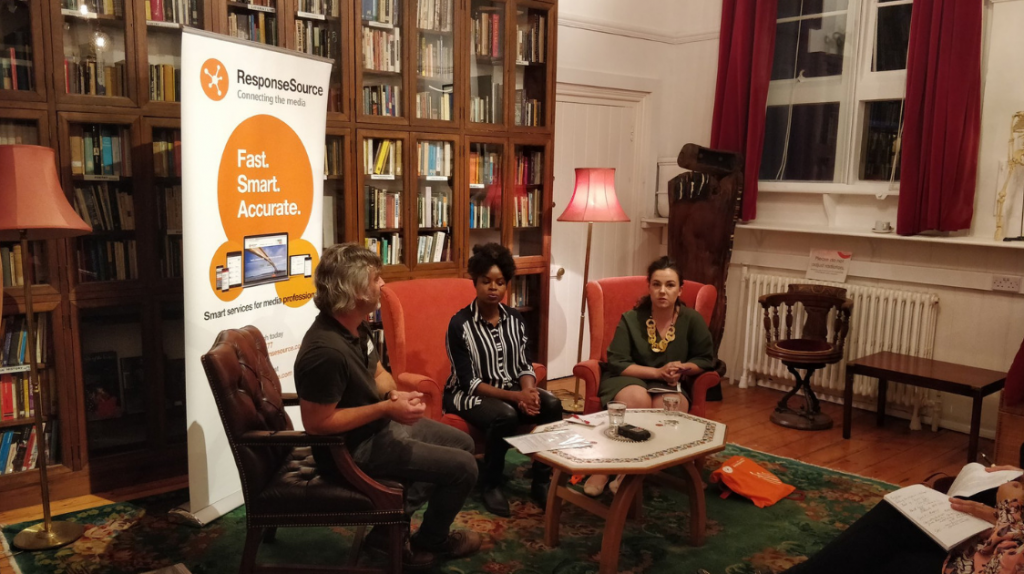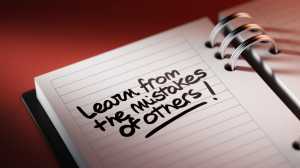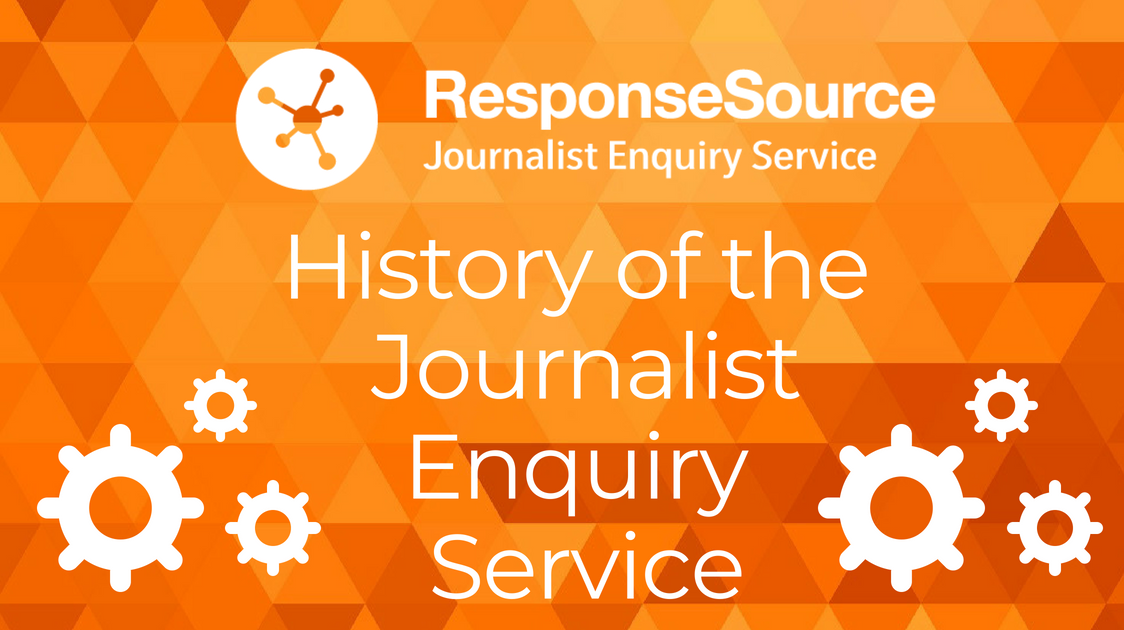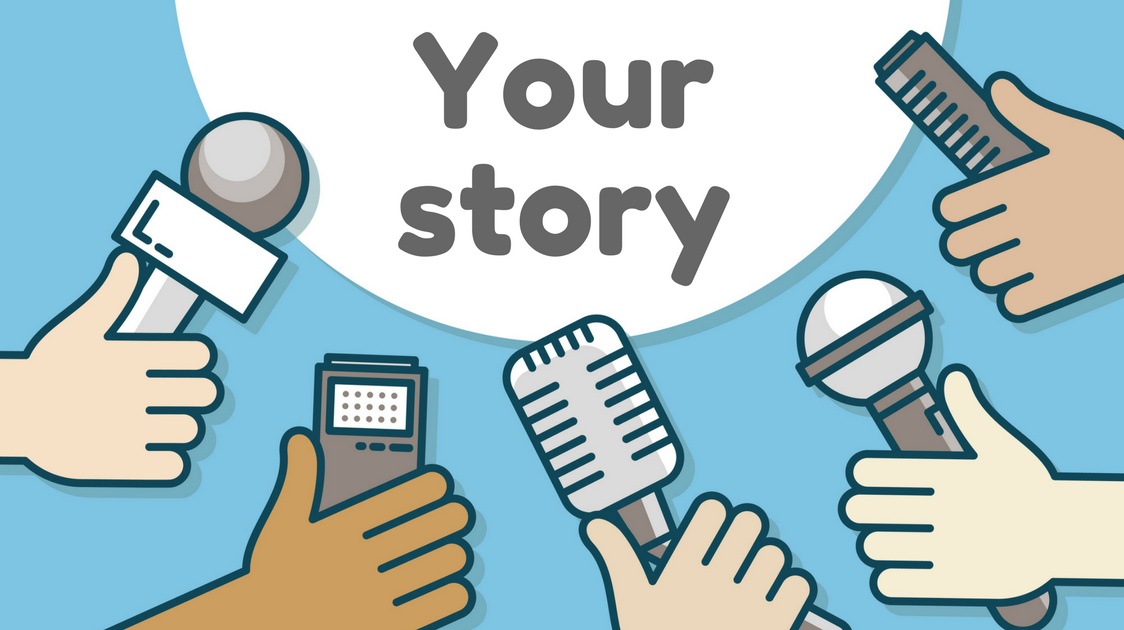ResponseSource Connects Event – Beauty

On October 11 2018 we held our first ResponseSource Connects event – connecting PRs with beauty journalists Keysha Davis and Sarah Parsons.
Both Keysha and Sarah use the Journalist Enquiry Service to source experts and materials, so they had a lot to say about how PRs could work better with them.
ResponseSource founder and former journalist Daryl Willcox hosted the event. Using questions requested by our PRs community, and some questions from our own experiences at ResponseSource, Daryl asked Keysha and Sarah about everything from press releases to email attachments.
Some background on our speakers
Keysha Davis has been Editor of Blackhair magazine since 2010. Keysha’s role includes writing and commissioning articles, managing an editorial team, leasing with marketing organisations to secure promotions and managing the social networking pages. Blackhair magazine has been around as a print magazine since 1998 but switched to online only at the end of last year.
Sarah Parsons is Features Editor across cosmeticsbusiness.com, Pure Beauty Magazine, and Cosmetics Business News. Sarah covers trends, marketing, retail, digital, brand ambassadors, employee moves and product launches for the global sector. The three titled are aimed at those who work in the beauty industry and have a combined circulation of over 200,000.
What did they share?
No brand is too small
Good news for smaller brands – both Keysha and Sarah are happy to hear from you. They don’t just stick with the big names.
Keysha revealed that the best product in a nude lipstick review turned out to be an indie brand and explained that it’s great for readers who may not otherwise hear about this range.
Sarah said that innovative indie brands are especially interesting.
Subject lines ARE important
Both journalists agreed that subject lines could be the difference between them opening your email or missing it. They explained that they can often be inundated with responses and it’s just not always possible to look at every message.
Keysha advised that a short snappy subject line will make it more likely for the email to catch her eye.
Niche enquiries require niche responses
Keysha let the audience know that it was very rare to get no replies to an enquiry, no matter how niche. Unfortunately this was because occasionally some people try to fit a non-related story into the request.
Both journalists responded that they don’t use irrelevant replies and that it was definitely annoying.
We cover this further in our post: Don’t tell journalists what they *should* be writing about
Respond fast but respond well
Being timely in your responses means that you are more likely to get in front of the journalist before an influx of other responses.
Sarah talked about how she is still thinking about the topic if you respond promptly, making it easier to deal with or file appropriately.
It’s important to understand the request though, explained Keysha.
Both journalists said they save content for future use, so may come back to the enquiry when they are writing something suitable down the line.
Include the right amount of detail
If a request is right for you, prepare your subject line and put together 1-2 paragraphs about how you can help. In consumer industries like beauty it is also useful to include product price in the body of the email too. Attach details such as your press release separately.
Sarah talked about how important it is to check experts are willing to talk before putting them forward.
Add attachments
Both journalists agreed that they are happy to receive images as attachments. They also like Word document press releases attached so they can copy and paste details like product ingredients – this can be crucial for accuracy.
Keysha discussed a situation where she really wanted to include a product in a piece but the press contact was unavailable. As she had not been sent any images she was forced to use an image from Google – definitely not ideal. So Keysha suggested that if you can include a couple of good mid-res images, then it can make a big difference.
Sarah reiterated that images should be attached, not embedded in a release, to make it easier to find and use them.
Both agreed that expiring links like We Transer are not ideal as emails can be filed for later use. Sarah mentioned that these links are fine if you are in conversation and quickly sharing lots of images, but expiry is frustrating.
Send lifestyle and cut-out images
Keysha explained that both cut-out product images and lifestyle images are useful for different reasons. Lifestyle images are ideal for social, and leading features, but consistency within a “tried and tested” feature means cut-outs on a white background look great. So have both types available.
If your response is not chosen don’t expect a reply, sorry
Keysha and Sarah explained that because they receive so many comments, sadly it’s not realistic to expect a reply unless they are looking to use your content.
Sarah said that a nudge email a few days later can be ok to draw attention to something missed. However, both agreed that they did not want a follow-up phone call because this can be intrusive, especially if they are on deadline.
Build relationships face to face if possible
If you can get in front of a journalist you are able to have a proper conversation and easily provide test products.
Sarah suggested that inviting for a journalist for coffee or coming into the office with samples both work great for her.
Keysha said that a phone call asking “what are you working on?” followed by an offer of relevant help works best for her, rather than chasing something already sent.
We have some further tips on building relationships in our post: PR pitching in a digital age
Provide journalists with the facts
When attending a press event, both Keysha and Sarah agreed that the most important thing they want is to hear a presentation, the who’s who, and to be able to access experts. With the growth of influencers there can be a bit of experiential marketing at beauty events, but the facts, quotes, and unique access to experts and exclusive content are why journalists attend.
Know the target audience of the publication
Keysha discussed that as Blackhair magazine is primarily for women of Afro-Caribbean heritage and dark skin tones, they still get sent a lot of stuff that is not suitable. Before sending samples, or even responding to an enquiry, it’s useful to check the target audience and make sure your product or expert is a good fit.
We’d like to say a big thank you to both Keysha Davis and Sarah Parsons for speaking at the event. We’ve had some great feedback. And also thanks to everyone that attended, we hope you found it useful.


